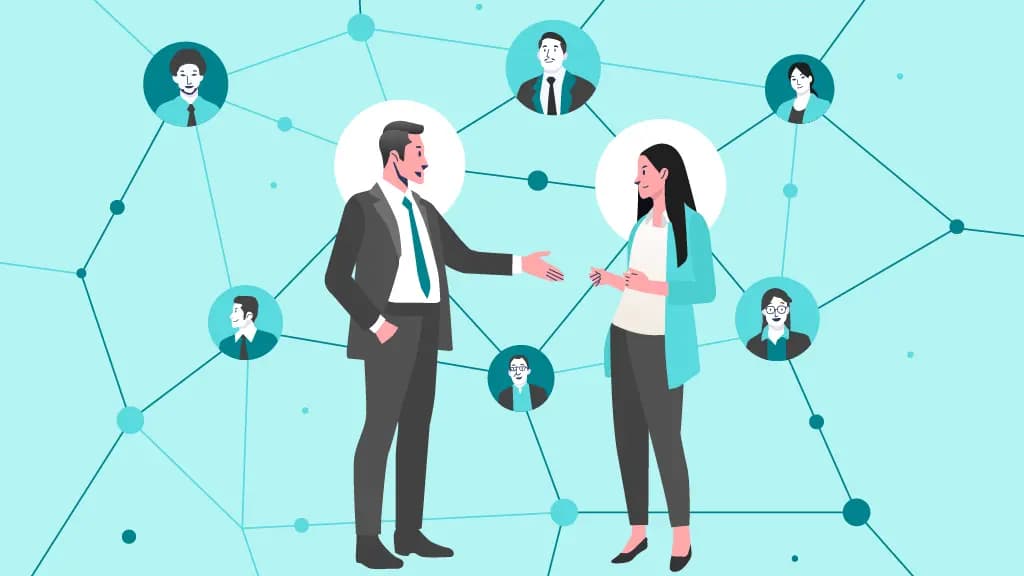
Table of Contents
Join our community
It’s no secret that happy, engaged employees are the backbone of any successful organization. But do you have an environment where employees not only enjoy coming to work but are also motivated to give their best? Does their initial enthusiasm fizzle out as they navigate the day-to-day realities of their role? Or does your company cultivate an employee experience journey that keeps them engaged, fulfilled, and eager to grow?
A positive employee journey experience isn’t a perk; it’s a necessity. It’s the roadmap that guides your employees from pre-hire to a happy retirement—with plenty of rewarding stops along the way. So, how do you craft an employee experience map worthy of a five-star review? Let’s explore the 8 core pillars that will transform your company into a haven for top talent.
Employee Experience Journey
Creating a well-designed employee journey yields substantial benefits, resulting in numerous positive outcomes for both employees and organizations. When employees are fully engaged, they not only demonstrate higher levels of productivity but also serve as exemplary brand ambassadors, attracting top talent to the organization. Furthermore, reduced turnover leads to significant cost savings for the company. At the same time, a happy workforce leads to a positive company culture which in turn fuels a spirit of innovation and success within the organization.
Research from Gartner underscores the impact of HR initiatives on employee engagement. It indicates that when HR actively works to make engagement programs more relevant and ensures that employees understand the efforts being made to engage them, employee engagement can increase by an impressive 49%.
Pillar 1: Onboarding for Success
You never get a second chance to make a first impression, and the same holds true for the employee journey experience. A well-structured onboarding process can help new hires feel welcomed, informed, and prepared for their roles.
So, what does an effective onboarding process look like? For starters, the new employee journey map should begin before the employee’s first day. Send a welcome email, provide them with information about the company and their role, and let them know what to expect on their first day.
Next, make sure their first day is well-planned and engaging. Introduce them to their team, provide a tour of the office, and set aside time for them to meet with their manager. Finally, remember that onboarding is a process, not a one-day event. Check in with new hires regularly to ensure they’re settling in and have the support they need.
Companies like Google and Twitter have set the bar high with their innovative onboarding programs. Google’s “Noogler” program, for instance, has been instrumental in helping new hires quickly adapt and contribute to the company. It includes a welcome event, a mentorship program, and a series of workshops and talks designed to help new hires grow.
Pillar 2: Strong Culture & Values
A robust, positive, and inclusive company culture can greatly improve the employee journey experience. After all, who wouldn’t want to work in an environment where they feel valued, respected, and part of a community?
However, building a successful employee journey mapping is easier said than done. It involves promoting a sense of community, respecting diversity, and living by the company’s values. Here are a few tips to help you get started:
- Lead by example: Company leaders should exemplify the company's values through their actions and decisions.
- Promote open communication: Encourage employees to share their views, problems, and feedback.
- Celebrate successes: Acknowledge and praise both individual and team achievements.
Companies like Zappos and Southwest Airlines are famous for their strong, unique cultures. Zappos, for example, has a “woohoo” department dedicated to celebrating and spreading happiness, while Southwest Airlines is known for its fun-loving, employee-first culture.
Pillar 3: Prioritize Communication
Open, honest, and regular communication can make employees feel valued and involved in the employee experience journey. It’s not just about the big company updates, either. Regular feedback, including both positive reinforcement and constructive criticism, is important to support the growth and development of employees.
So, how can you promote effective communication in your organization? Here are a few ideas:
- Encourage two-way communication: Ensure employees feel comfortable sharing their input and ideas and are receptive to their feedback.
- Be transparent: Share information about the company's goals, challenges, and successes
- Make time for feedback: Schedule one-on-one meetings between employees and their managers regularly.
Companies like Buffer and Patagonia are known for their commitment to transparency and open communication. Buffer shares all employee salaries and revenue numbers with the entire team. Patagonia involves employees in decision-making processes and encourages them to speak up about environmental and social issues.
Pillar 4: Focus on Learning & Development
Employees highly value opportunities for growth and development during their time at the company. After all, who doesn’t want to improve their skills, take on new challenges, and advance in their career?
Here are a few ideas for promoting learning and development in your organization:
- Offer training programs: These could be in-house programs or external courses and workshops.
- Provide mentorship opportunities: Connect employees with seasoned mentors who can offer guidance and support.
- Encourage cross-departmental collaboration: This can help employees broaden their understanding of the company and develop new skills.
Companies like AT&T and MasterCard have seen impressive results from their investment in employee development. AT&T’s “Career Re-Discovery” program, for example, has helped thousands of employees transition to new roles within the company. At the same time, MasterCard’s “Learning and Development” initiative has been credited with improving employee engagement and retention.
Pillar 5: Promote Work-Life Balance
Respecting employees’ time and promoting a healthy work-life balance can greatly improve their overall experience in the employee journey map. This not only benefits employees but also the company, as a happy, well-rested employee is likely to be more productive and engaged.
Here are some strategies to effectively enhance work-life balance within your organization:
- Offer flexible working hours: Flexible scheduling helps employees manage their personal and professional responsibilities better.
- Encourage time off: Ensure employees are taking advantage of their vacation days and encourage them to disconnect from work during their time off.
- Promote wellness: This could be through a wellness program, gym memberships, or regular team-building activities.
Companies like SAS and American Express are known for their commitment to work-life balance. SAS, for example, offers on-site childcare, a gym, and a healthcare center. At the same time, American Express provides flexible work arrangements, wellness programs, and a “Recharge” program that encourages employees to take a break from work.
Pillar 6: Implement Recognition & Rewards
Acknowledging and rewarding employees’ hard work and achievements can boost morale and motivation in the employee experience journey. This doesn’t necessarily have to be in the form of monetary rewards, either. A simple thank you or accolade in a team meeting can go a long way.
Here are a few ideas for implementing recognition and rewards in your organization:
- Create a recognition program: This could be a formal program with set criteria or a more informal program in which employees can nominate their peers.
- Celebrate milestones: Acknowledge and celebrate milestones and accomplishments of both individuals and teams.
- Offer development opportunities: Reward high-performing employees with opportunities for growth and development, such as leadership roles or training programs.
Companies like OGO and Microsoft have seen impressive results from their recognition and reward initiatives. OGO’s “Peer-to-Peer” recognition program, for example, has been credited with improving employee engagement and morale. Also, Microsoft’s “Most Valuable Professional” program recognizes and rewards technology experts who make significant contributions to the community.
Pillar 7: Prioritize Wellbeing & Mental Health
Prioritizing employees’ physical and mental health in the employee journey mapping demonstrates that you value them as individuals, not just as workers in the organization. This can help foster a supportive, empathetic work environment where employees feel at ease seeking assistance when necessary.
Here are a few ways to prioritize well-being and mental health in your organization:
- Offer wellness programs:These could include gym memberships, health screenings, or mental health resources
- Encourage open communication: Ensure that employees are at ease talking about their mental health and seeking assistance when necessary.
- Promote a positive work environment: This could be through team-building activities, a strong company culture, or a commitment to work-life balance.
Companies like Johnson & Johnson and Google are known for their commitment to employee wellbeing. Johnson & Johnson, for example, offers a “Live for Life” program that includes fitness centers, health screenings, and stress management resources. Similarly, Google provides employees with on-site healthcare, mental health resources, and a “Search Inside Yourself” program that focuses on mindfulness and emotional intelligence.
Pillar 8: Ensure Amiable Employee Offboarding
A strong employee journey is composed of meaningful interactions between the employer and the employee. The end of an employee’s tenure with your company doesn’t necessarily mark the end of your relationship with them. It’s essential to approach this phase with care and thoughtfulness. Ensuring a positive offboarding experience can pave the way for future engagements.
Successful offboarding strategies in employee journey mapping can include:
- Conducting exit interviews to gather constructive feedback.
- Providing comprehensive handover processes.
- Maintaining an alumni network to stay connected.
When an employee leaves on good terms, they retain their value as potential candidates for future roles. Their familiarity with your company’s values and policies can be a significant asset. This underscores the long-term benefits of maintaining a positive relationship with departing employees.
There you have it! The eight core pillars of an incredible employee journey mapping. From the onboarding process to employee wellbeing, each of these is an integral pillar that contributes significantly to the environment wherein employees can truly prosper.
Remember, an incredible employee journey map is not something that companies can achieve overnight. Still, with time, effort, and a commitment to your employees, you can create a truly exceptional experience.
So, what are you waiting for? It’s time to start mastering the employee experience journey!







